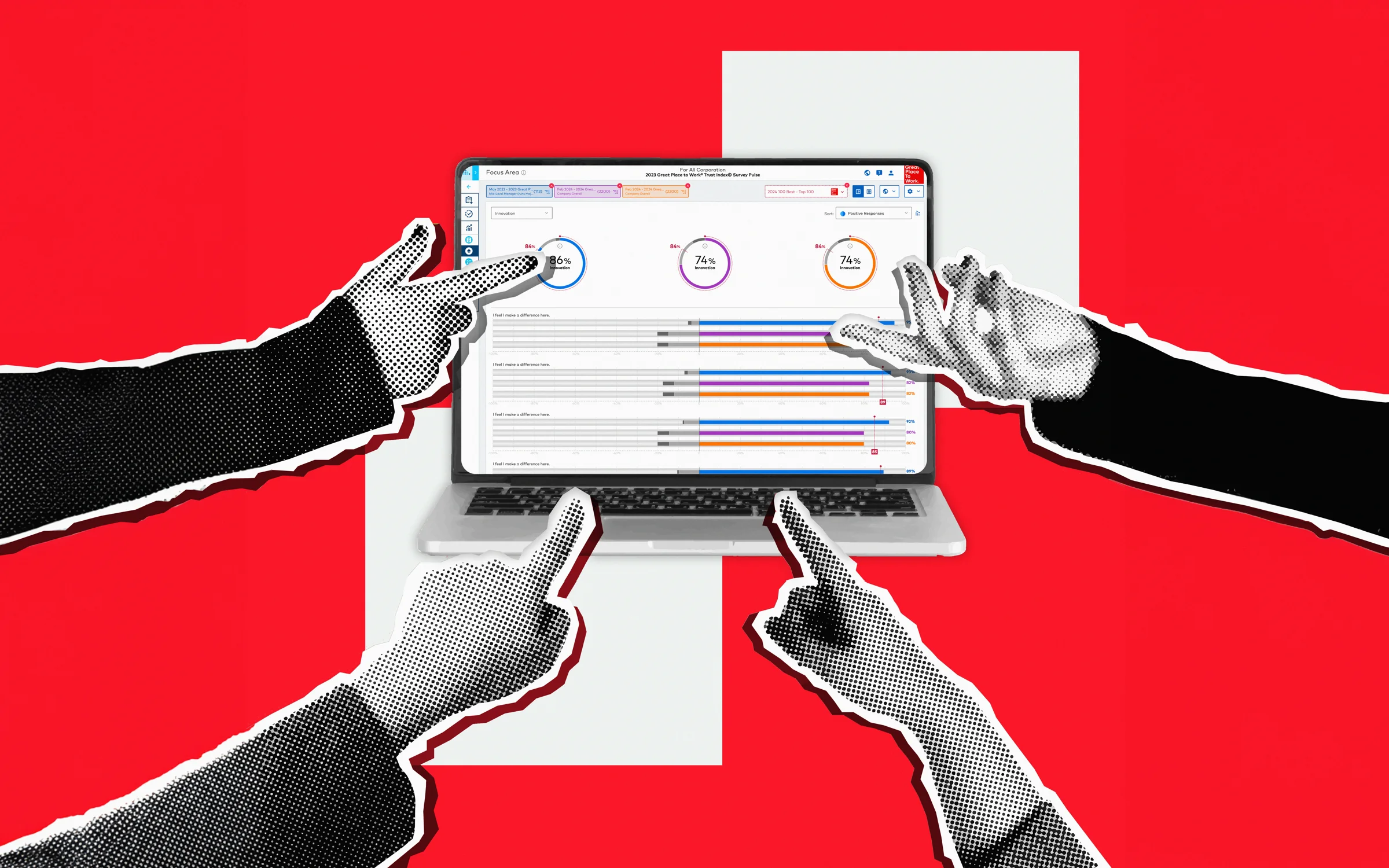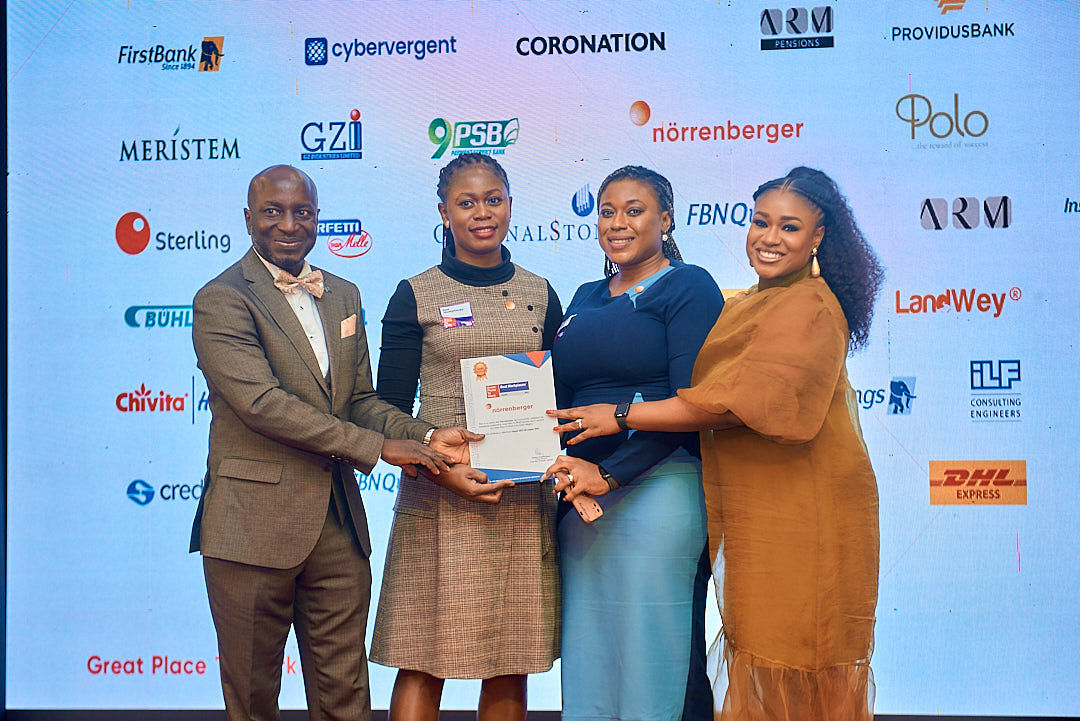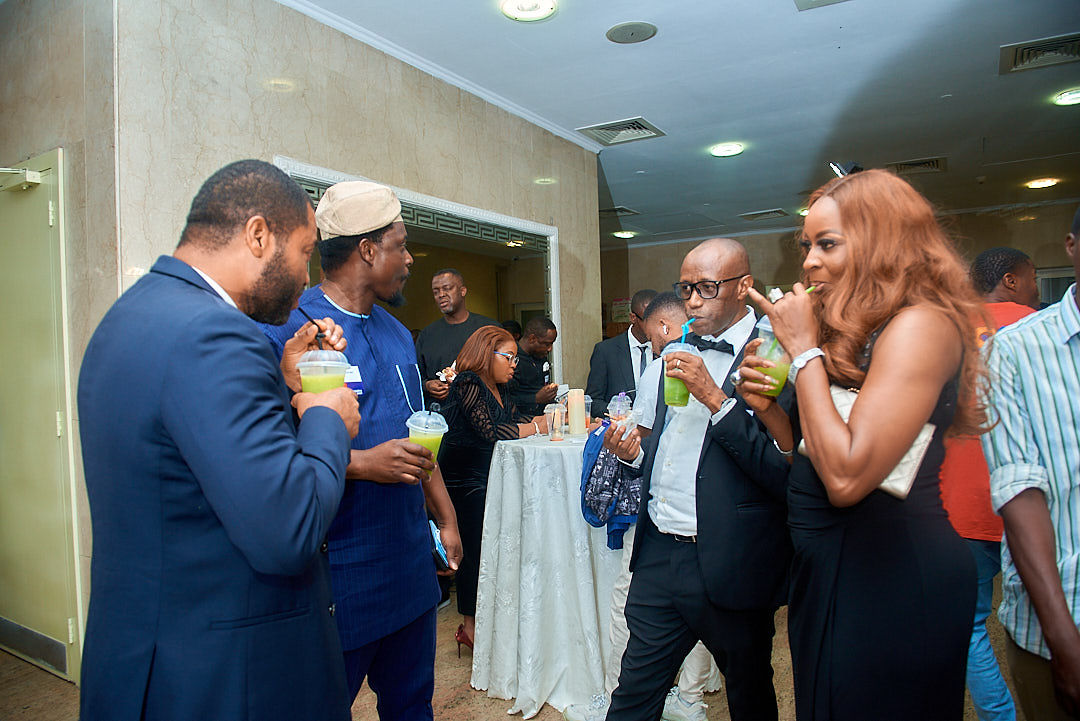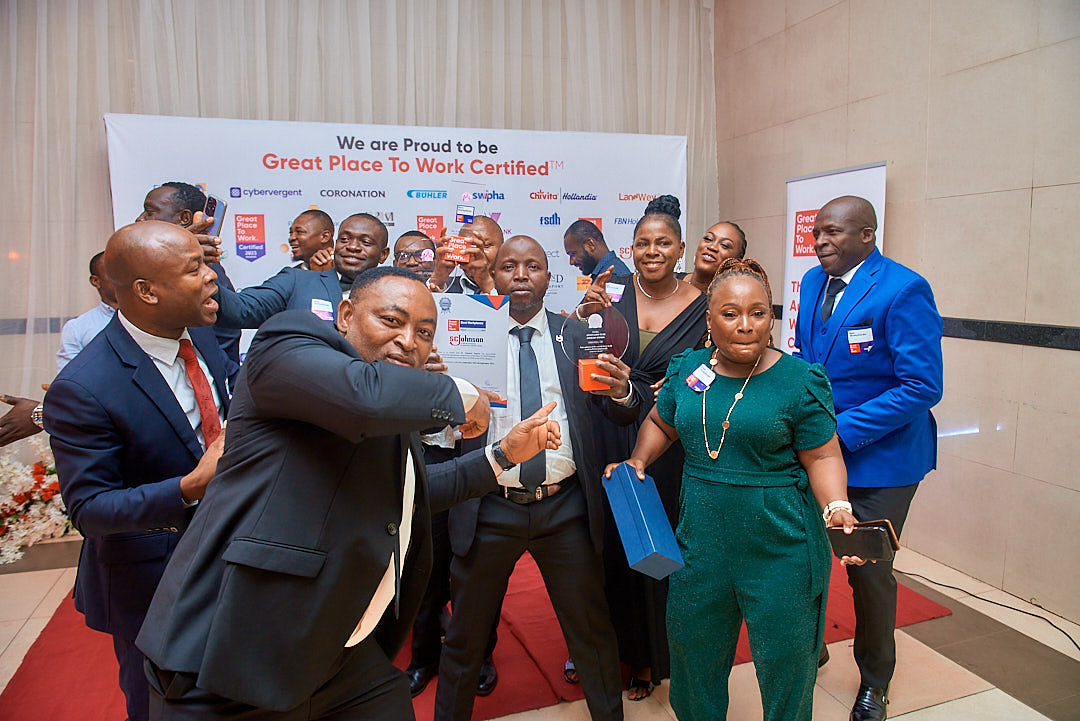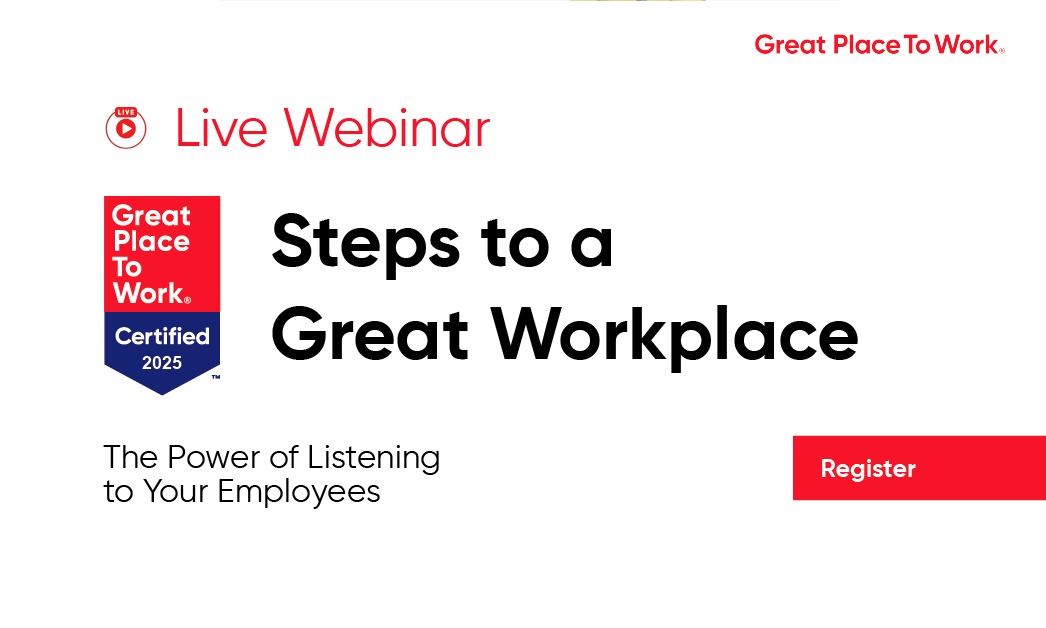Learn about the latest organizational culture trends, best practices, and research from the global authority on workplace culture.
The Best Workplaces in Banking 2025 list has just been released, and the organisations featured on this list are not only redefining employee experience in the Nigerian banking sector but also setting the pace for how workplaces can become true engines of growth and profitability.
At Great Place To Work®, our evaluation is built on the voices of employees through the Trust Index™ Survey, and the results consistently show that people are the best judges of what makes a workplace great. In the case of the banks on this year’s list, the stories the numbers tell are both compelling and inspiring.
1. Intentional Leadership that Builds Credibility
Employees don’t just want paychecks; they want leaders who are credible, intentional, and consistent. This year’s survey revealed:
- 99% of employees at PremiumTrust bank said, “Management is competent at running the business.”
- 98% of employees at Sterling bank affirmed, “Management is honest and ethical in its business practices.”
These are not trivial numbers. They point to deliberate actions by management teams to align words with actions — a credibility gap that is often lacking in many organisations. When employees believe leadership is authentic and ethical, trust flourishes. Trust, in turn, reduces friction, accelerates decision-making, and ultimately drives business efficiency.
2. Employee Initiatives that Inspire Pride
Great workplaces are not only defined by what management does but also by how employees feel about their contributions. This year’s survey showed that:
- 97% of employees of Sterling bank agreed, “I would strongly endorse my company to friends and family as a great place to work.”
- 95% of employees of Providus bank said, “I'm proud to tell others I work here.”
These results highlight something powerful: employees in these organisations are not just “doing their jobs.” They are proud of the work they do, and they feel it matters. When employees carry pride in their workplace, they become natural ambassadors for the brand — reinforcing reputation in the market, strengthening customer loyalty, and even attracting new clients who want to do business with credible, people-first organisations.
3. A Signal to Top Talent: Look Out for the Badge
For job seekers — especially top talent — the message is clear: the best workplaces in banking are defined by their people, not their PR. The employees in these certified organisations have spoken, and their voices affirm that these workplaces are where trust, pride, and purpose intersect.
If you are considering your next career move, one simple tip: look out for the Great Place To Work® Certification badge. It is the ultimate symbol that the organisation you are applying to has been validated by its own employees. It means you’re not just joining a company; you’re joining a community where people thrive.
4. The Bottom Line: Culture Drives Profitability
Culture is not just a “nice-to-have” — it is a business driver. High-trust, high-pride workplaces don’t just have happier employees; they have more engaged, more innovative, and more productive teams. For banks especially, where customer trust and market reputation are critical, having employees who believe in the ethics, credibility, and pride of their organisation translates directly into better service delivery, stronger customer relationships, and ultimately higher profitability.
In essence, these banks are proving what research has consistently shown: when you put your people first, your business performs better.
Final Word
The Best Workplaces in Banking 2025 list is not just a ranking. It is a recognition of intentional leadership, meaningful employee initiatives, and cultures that deliver both human and business value.
To the organisations that made it — congratulations. To the talent market, the message is simple: if you want to grow your career in a place where your voice matters, choose a workplace with the Great Place To Work® Certification badge.
Because when employees say it’s a great place to work, that’s when you know it truly is.
In today’s fast-evolving workplace, success is no longer defined by quarterly profits alone. The most respected and resilient organisations are those that listen—consistently, intentionally, and empathetically. At Great Place To Work®, we believe that the best workplaces are built on trust, and that trust is built through feedback.
That’s why we offer two powerful tools: the Trust Index™ Survey and Pulse Surveys. These tools give leaders insight into what their employees are thinking, feeling, and experiencing—helping them build workplaces where people and performance thrive.
The Trust Index™ Survey is a globally recognized diagnostic that measures the health of your culture. It captures insights across five key dimensions: credibility, respect, fairness, pride, and camaraderie. With decades of research behind it, this survey goes beyond engagement to reveal what truly drives commitment, innovation, and retention in your workforce.
However, culture is dynamic—not something you measure once a year and forget. That’s where Pulse Surveys come in. These short, flexible check-ins enable organisations to listen to employees throughout the year and respond quickly to shifting sentiments. Whether you’re undergoing leadership transitions, rolling out a new policy, or simply maintaining momentum, Pulse Surveys provide real-time insights that help leaders stay agile and connected.
The Proof Is in the Data
According to global Great Place To Work® research:
- Companies that regularly measure employee sentiment and act on feedback outperform their competitors by 2x in employee retention.
- High-trust workplaces report up to 8x higher employee engagement and 4x higher revenue per employee than industry averages.
- 87% of employees in certified great workplaces say they are “willing to give extra effort” on the job—compared to 53% in typical workplaces.
A Client’s Perspective
Take Techno Brain Group, a certified Great Place To Work® company. After completing the Trust Index™ Survey and implementing culture insights from both it and follow-up pulse checks, they shared:
“The Trust Index Survey gave us honest, powerful feedback directly from our people. It wasn’t just about what was working—it showed us where we needed to grow. By listening and acting on the feedback, we’ve built stronger trust and improved communication across all levels. We’ve seen a visible shift in engagement and performance."
Listening Is a Leadership Advantage
What separates good workplaces from great ones isn’t the survey itself—it’s what leaders do with the feedback. When employees see their voices leading to action, it builds deeper trust, loyalty, and innovation.
But when organisations ask for feedback and do nothing with it, it breeds disengagement. That’s why sharing results, communicating next steps, and celebrating progress are crucial to keeping the culture conversation alive.
Don’t just check the box. Use feedback to fuel transformation.
- ✅ Use the Trust Index™ Survey to uncover the big picture.
- 🔁 Use Pulse Surveys to stay in tune in real time.
- 💡 Turn insight into action that your employees can feel.
Let your employees know they’re heard.
Let your culture speak louder than words.
Let your workplace become a great one—on purpose.
Ready to Elevate Your Workplace?
Start measuring what truly matters.
Schedule a free consultation with us today and learn how the Trust Index™ Survey and Pulse Surveys can help your organisation attract, retain, and engage top talent while building a high-trust culture.
👉 Fill the form bellow to get started or email us at This email address is being protected from spambots. You need JavaScript enabled to view it.
Let’s create a great place to work—together.
Why Get Certified?
At Great Place To Work®, we believe great workplaces are built through the power of people. Becoming Great Place To Work-Certified™ isn’t just a badge — it’s a signal to your employees, clients, and the talent market that your company values trust, inclusion, and excellence.
Certification opens the door to being recognized among Nigeria’s great workplaces, culminating in a grand celebration at the Great Place To Work 2025 Award Ceremony on October 31 at Muson Centre, Lagos.
How to Get Certified and Join the Awards:
1. Indicate Your Interest
Start by filling out this enquiry form or sending us an email (the details are below). We'll guide you through the onboarding process and assign a consultant to your account.
2. Launch the Trust Index™ Survey
This globally validated employee survey measures trust through credibility, respect, pride, fairness, camaraderie, and overall employee experience. It takes an average of 15 minutes for a member of your team to complete.
3. Complete the Culture Brief™
You’ll fill out a short document that tells us about your workforce demographics and workplace practices. See it like your corporate profile, which you already have information about and share some of the information there with us.
4. Receive Your Certification Results
Once your results are in, we analyze the data. If your employee experience meets the threshold (65% or more positive responses), congratulations — you’re officially Great Place To Work-Certified™!
5. Get Featured & Eligible for the 2025 Awards
Certified companies are automatically considered for our annual Best Workplaces™ list. Winners will be unveiled at our landmark award ceremony, alongside special recognitions in leadership, innovation, diversity, and more.
What You Stand to Gain:
- National Recognition as an employer of choice
- The Great Place To Work Certification – A badge recognised in 170+ countries of the world!
- Improved Employer Branding with media coverage and social campaigns
- Attraction of Top Talent who seek purpose-driven workplaces
- Exclusive Invitation to the 2025 Award Ceremony and networking with Nigeria’s finest organisations
- Eligibility for Special Category (Best Practices) Awards (e.g., Best in Leadership, Best in Learning and Development)
Is Your Organisation Eligible?
We work with organisations across industries and sizes — from startups to multinationals. If you have 10 or more employees, you're eligible to apply.
Take the First Step Today
Visit our Certification Page or email us at This email address is being protected from spambots. You need JavaScript enabled to view it. to begin your journey toward recognition, visibility, and greatness.
Be Certified. Be Celebrated. Be a Great Place To Work®.
Congratulations on Becoming Certified!
Being Great Place To Work-Certified™ is no small feat. It’s a direct reflection of your employees’ trust in leadership, pride in the organisation, and sense of belonging at work. Beyond the celebration, how do you get the most out of your certification?
Here’s how you can leverage your certification for employer branding, industry credibility, and award-winning recognition at the Great Place To Work® 2025 Awards.
1. Promote Your Badge Internally and Externally
- Display the certification badge on your website, careers page, and email signatures
- Announce your achievement on LinkedIn, Instagram, and Twitter/X
- Create a short video with your employees sharing what makes your workplace great
Tip: Use our toolkit of templates, social media banners, and press release samples to make it shine!
2. Share Your Story
Feature your certification journey in a company newsletter, blog post, or leadership podcast. Let the world hear:
- Why you pursued certification
- What employees had to say
- Your plans for continuous improvement
Bonus: You may be selected for a case study or culture spotlight in our 2025 Award Ceremony brochure!
3. Prepare for the Awards
Certified organisations are automatically eligible for:
- Best Workplaces™ lists
- Special Recognition Awards (Leadership, DEI, Well-being, Innovation, etc.)
Ensure your internal teams are:
- Ready to submit optional supporting materials (if requested)
- Available to attend the October 31st event in Lagos
- Represented by C-suite and HR leaders to build industry visibility
4. Engage with Our Community
- Join the GPTW HR & Business Leaders Community on LinkedIn and WhatsApp
- Attend our certified client webinars (Celebrate Your Great) and thought-leadership events (Great Conversations with Great Leaders)
5. Let It Work for Your Talent Brand
- Use your certification status in job ads and recruitment campaigns
- Share it during onboarding to build employee pride from Day 1
- Add it to your employer profile on job boards and Glassdoor-like platforms
Greatness Is Ongoing
Remember: the badge is a milestone, but your journey toward a better workplace is continuous. We’re here to support you every step of the way.
"Let’s make the 2025 Award Ceremony your most unforgettable moment of celebration and recognition yet!"
What truly makes a workplace great?
🔹 Trust: The Bedrock of Greatness
🔹 Leadership That Listens and Empowers
🔹 Inclusion and Belonging
🔹 Purpose and Passion
🔹 Recognition and Celebration
🔹 A Look Ahead
Great workplaces don’t happen by chance.
They are intentionally built, nurtured with care, and sustained through consistent commitment.
Are you ready to start your own journey?
With five months to go, there is still time to take meaningful steps toward transforming your culture and earning recognition as a Great Place to Work–Certified™ organisation.
Don’t wait.
Let this be the year your organisation is not just part of the audience—but part of the celebration.

